Moccasins, driving mocs, loafers… many men get confused as to what exactly is a moccasin or loafer, and hence today we’d like to share a Moccasin guide. First, we discuss the rich history of this kind of footwear, highlight variations such as driving mocs and “moccasins” with soles, and provide tips on how wear & buy them.
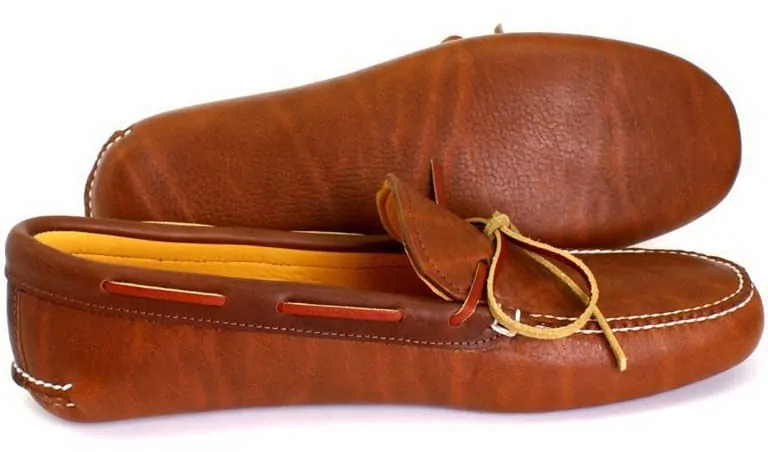
What is a Moccasin?
The moccasin has a long history but first, let’s clarify what the term actually stands for. The Encyclopaedia Britannica describes a moccasin as a ‘ heelless shoe of soft leather, the sole of which may be hard or soft and flexible; in soft-soled moccasins, the sole is brought up the sides of the foot and over the toes, where it is joined by a puckered seam to a U-shaped piece lying on top of the foot. The upper part of the moccasin is often adorned with embroidery, beading, or other ornament.’
Note, some people claim a genuine moccasin does not have a separate sole, and while it is true that the moccasins of many American Indian tribes did not feature a sole because the soft leather was ideal for forest grounds and hunting, tribes who resided in the mountains or prairie often attached a separate sole of bison leather so the moccasins were more suited to their environment.
Shoes with heels, such as a Norwegian and loafers, are often advertised as moccasins, but technically that’s incorrect and what they refer to are the “moccasin style” U-shaped leather uppers.
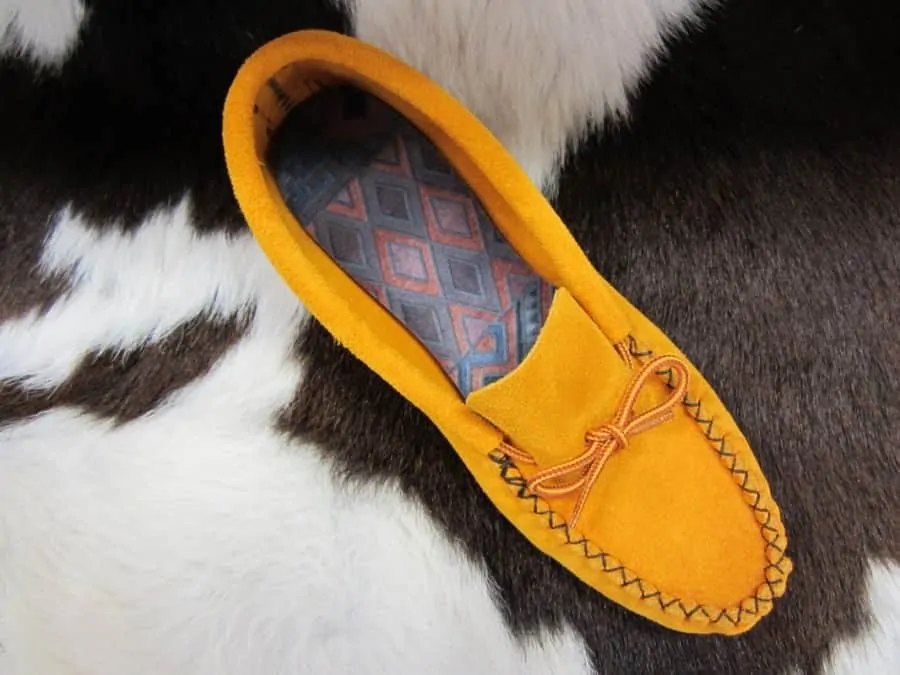
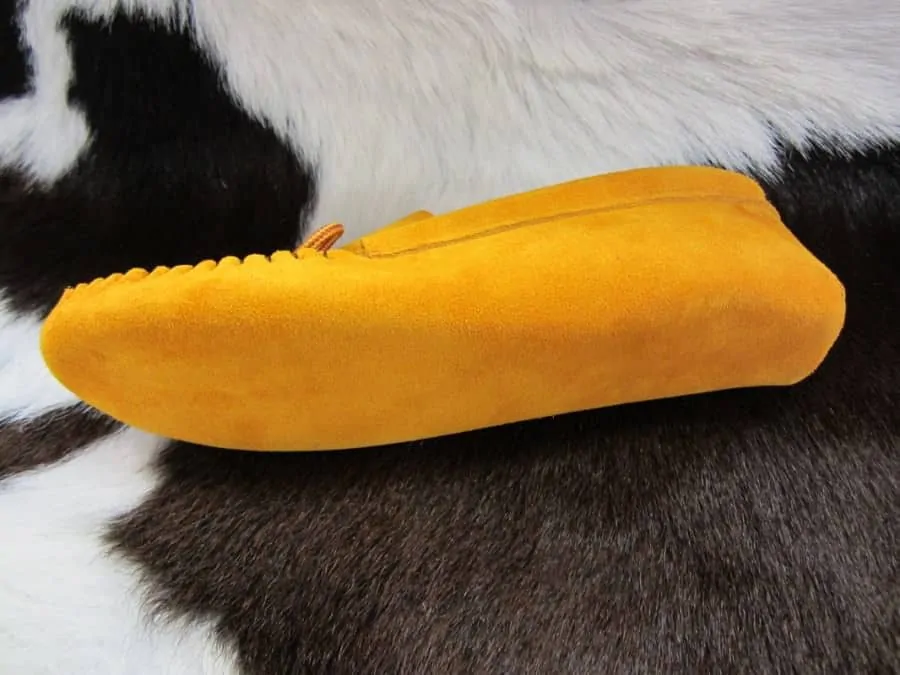
The History of the Moccasins
Although one could argue that moccasins are the quintessential North American shoes, it is likely that it arrived in the U.S. around 30,000 years ago via the Bering Sea from Asia. Subsequently, the style was adapted by Indian tribes and due to different climates and habitats across North America, various versions of the moccasin evolved, each suited to the climate and terrain of its tribe’s origin.
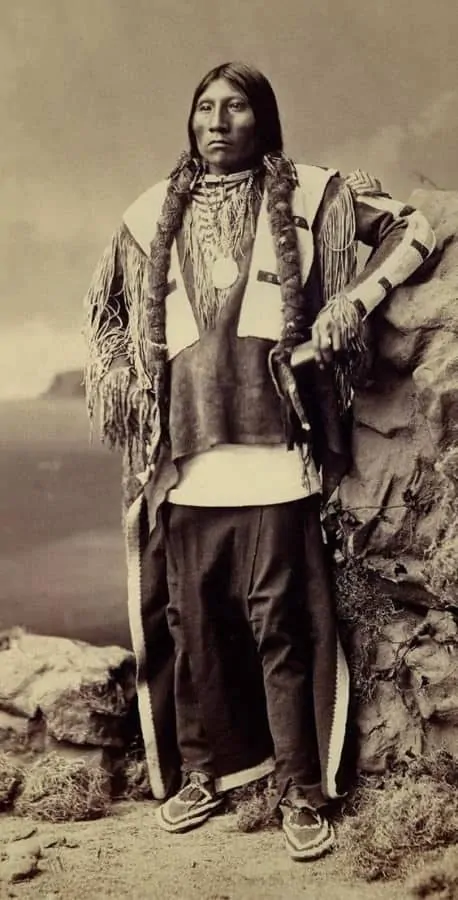
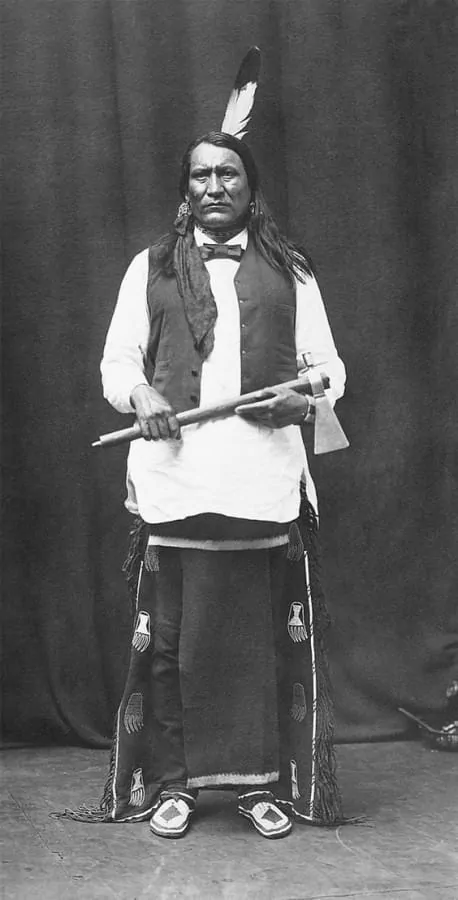
Etymologically, the word moccasin is derived from the Algonquian language Powhatan where makasin means shoe. In fact, most indigenous Indian tribes of North America have similar words to denote shoes but as the Algonquians were the first people encountered by the Europeans around 1615 in North America, the term was brought to England, where is was established.
Styles of Original Moccasins
Although there are various style moccasins that evolved due to different habitats and climates, they can be broadly divided into two types: hard sole and soft sole.
- Hard Sole Moccasins – these are typically associated with the western plains and desert areas of North America. The hard sole was often made of tough bison leather and designed to protect the feet of the wearer from the harsh cactus and prairie-grass typical of the terrain in those areas. In addition it also provided protection from sharp rocks. The hard sole moccasin was usually made from two or more pieces of hide. They usually have a turned up toe which prevented sharp objects from running into the seams and injuring the foot.
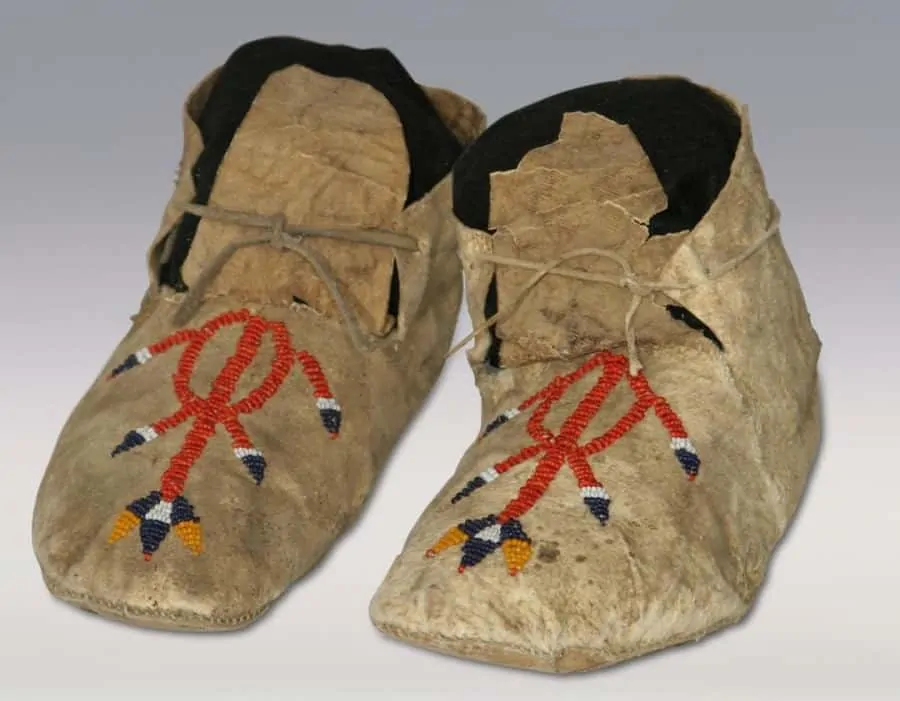
- Soft Sole Moccasins – are typically associated with the Eastern forests of North America dominated by woodlands with leaf and pine- needle covered ground and thus the feet did not require the amount of protection provided by a hard sole. The soft soled moccasins were often made from only one piece of leather. The sole was brought up around the foot and was then puckered or patched around the instep; some were sown along one side of the shoe rather than in the center. However the most basic style was the simple center seam. The two piece varieties featured a U shaped piece which served as a vamp. Some had an additional piece that served as a cuff.
While these are the two broad types of moccasins, they came in a wide variety of styles and types unique to the different tribes that wore them. In fact, these styles were so distinctive, that is was possible to identify the tribe by the moccasins. Experts even go so far as to identify different tribes by footprints.

Moccasin Leathers
Moccasins were made from soft tanned hides of deer or buffalo or bison rawhide was used for the hard soled variety. Today, you can also find moccasins made of deerskin or moosehide. They were assembled inside out and thus the stitching was hidden. Sinew / Tendon was used for the stitching and holes would be punched through the hide to facilitate it. The knot would be kept on the outside to facilitate comfort. The whip stitch and the running stitch were commonly used. Moccasin construction was fairly uniform across tribes however each tribe had distinctive methods of decoration. These differences also included the cut of the moccasins and the some of the common names of the various tribes such as the Blackfoot and Chippewa are derived from their moccasins. Lavish bead work, quill work and painted designs were used to adorn and decorate moccasins. Women of certain tribes often attached thigh length leggings to their moccasins giving them the outward appearance of boots.
The moccasin was built for both comfort and practical wear and one of the unique features of this shoe was that it allowed the wearer to ‘feel’ the ground as he walked while still protecting his feet. And as they were designed for specific habitats and terrain it was no surprise that very soon they became the footwear of choice for the European settlers. Among the Europeans settlers, they were favoured by hunters and traders who had to traverse long distances on foot. That other iconic piece of American footwear – the cowboy boot – while perfect for a life on horseback was ill suited to walking.
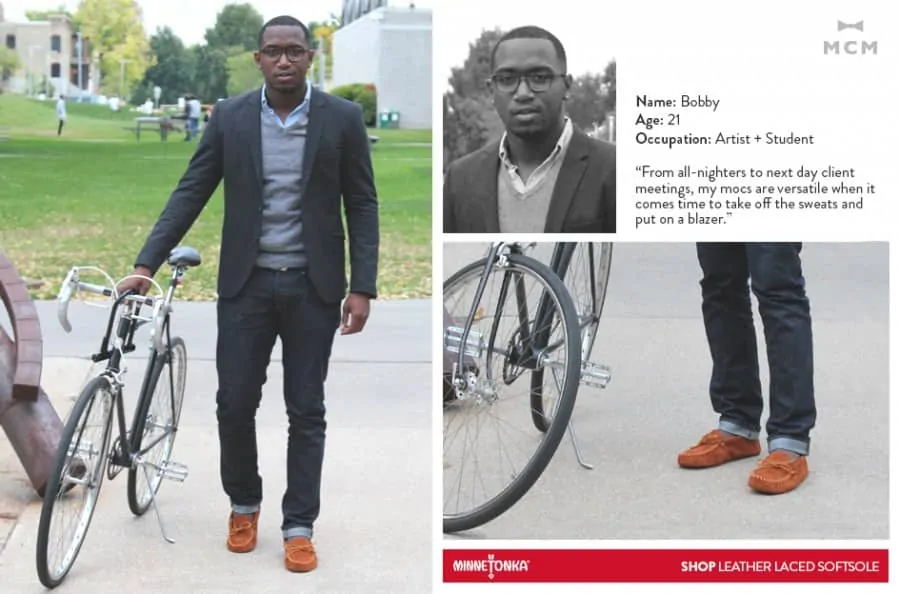
The moccasin remained a popular choice among the European settlers due to their practicality but as the country became more settled and industrialized, they slowly but surely started to lose their popularity. By the time of the Second World War, they were mostly restricted to resorts and souvenir shops. After the end of WWII, a new generation took to the highways to explore their country’s natural beauty and rediscovered the moccasin. By this time advances in the manufacturing sector enabled them to be made in different types of leathers and colors thus adding to their charms. They very soon regained their popularity, which is evidenced by the fact that the company Minnetonka Moccasins was founded in 1946.
Today, most moccasins feature a double sole for increased durability and original moccasins are rarely worn on the street because pavement and concrete and much harder surfaces. As such, you will sometimes find added rubber or leather soles added to make more wearable in the 21 century. Some also use them for shoes around the house.
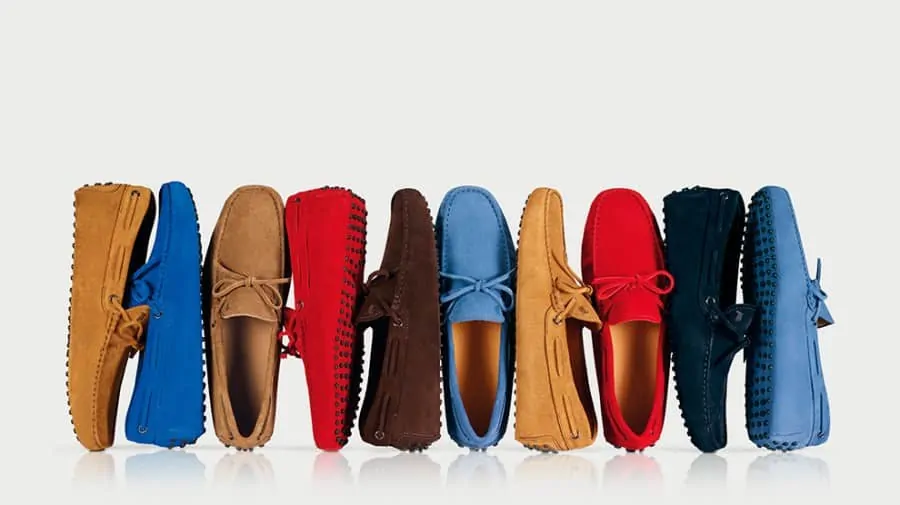
Driving Mocs & Tod’s
Today, the most popular moccasin style is probably the Driving Moccasin or Driving Moc. Technically it is not a genuine moccasin but rather a new derivation by Diego Della Vale from Tod’s from Italy. His father owned a shoe company that made private label shoes for Saks Fifth Avenue and Neiman Marcus. Aged 16, he came across an interesting pair of “moccasins” that were made in Portugal. Although poorly constructed, he found them interesting and brought the pair home with him, and today it is the core of their brand. Of course, it wasn’t just the product – the chose a simple, yet memorable name: J.P Tod’s and although some rumor it may have been a name from a Boston telephone book, Della Valle claims it wasn’t.

Tod’s driving mocs feature an insole with little knobs which peak through holes in the sole. Generally, they are more of a casual summer shoe because otherwise, your feet get wet quickly. Unfortunately, you cannot really repair this shoe, and so most people discard them once the knobs have worn off. Sometimes, a cobbler will be able to attach a new, more durable sole thus impacting the character of the shoe. To make them more durable, some manufacturers have started to add large rubber elements to the sole. Finding a driving moccasin that is great for you can be a challenge, because there is almost too much choice, in all price categories from thousands of brands and vendors.
Personally, I like more unusual shoe colors such as bright red, royal blue, green, yellow, sky blue… in suede for summer wear with seersucker trousers or shorts on warm weekends. Normally they are worn without socks but lately, people have come up with all sorts a sweat absorbent inserts, but the problem is they make the shoe smaller and often less comfortable to wear. As such, make sure that the inside of the shoe is all leather, because it absorbs moisture, unlike synthetic materials.
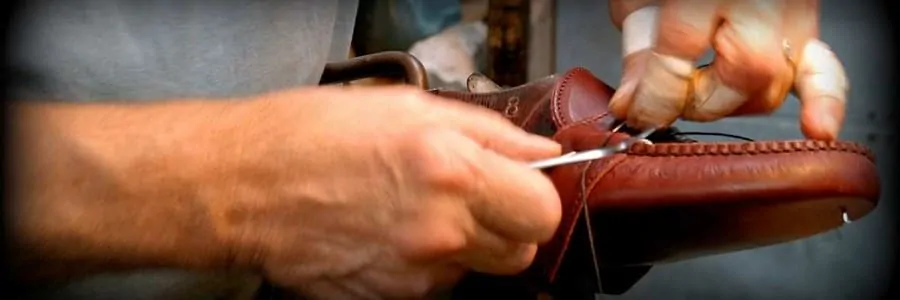
Boat Shoes & Moccasin Construction
Boat Shoes are loafers that are often advertised as having moccasin construction. While that is technically not true, the U-shaped uppers and construction is the same or similar to a genuine moccasin, but they add a leather sole, a rubber sole and sometimes heels to it. Most of the time, they are simply loafers and we will discuss those in a separate guide.
Moccasin Buying Guide
If you want a true soft sole moccasin I recommend going with Minnetonka Moccasins and their soft deerskin double sole moccasin, which are widely available. Alternatively, the Thunderbird Trading Company offers them and Wassookeag Moccasins make them to order so you can choose the leather and details. If you want the real deal, you can still find handmade examples by Native American craftsmen.
| Brand | Where to Buy |
|---|---|
| Arrow Moccasins | Shop Now |
| Minnetonka Moccasins | Double Deerskin Soft sole Moccasins |
| Thunderbird Mountain Trading Co. | Shop Now |
| Wassookeag Moccasins | Shop Now |
| Tods | Shop Now |
| Minnetonka Moccasins | Shop Now |
| Rancourt | Shop Now |
| Russell Moccasin Co. | Shop Now |
| Quoddy | MTO |
Do you know of a brand that provides quality moccasins that we have not listed here? Please let us know in the comments. Do you wear moccasins at all? If so, how do you combine them?
This article is a collaboration between Sven Raphael Schneider & Vikram Nanjappa.
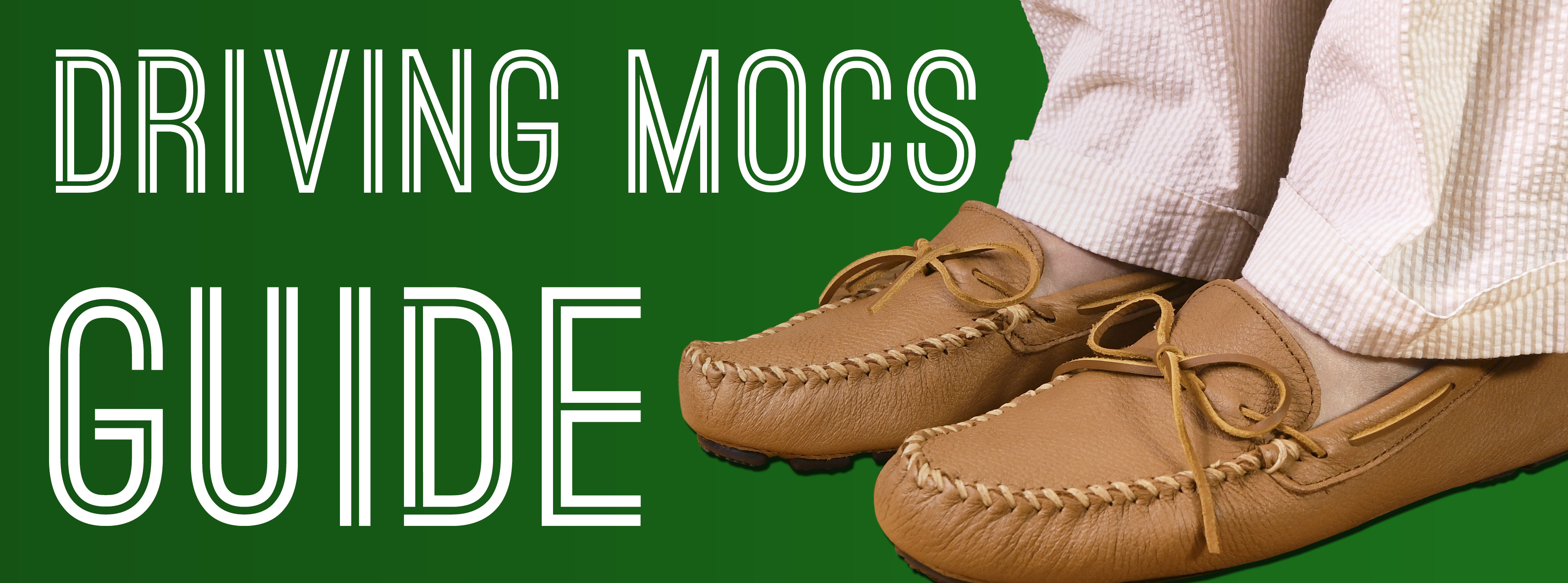
I enjoy your newsletter and Facebook posts and they inevitably leave me wanting a bigger paycheck and more closet space. However, I do have one nit to pick regarding the claimed 30,000 year age of migration to the Americas. I am by no means an expert on the subject but most articles I’ve read don’t place the first human inhabitants earlier than roughly 14,000 years ago, if that. A few years ago there was a find in South America in which the investigator claimed an age of something more than 20,000 years but, as I understood it, the context was quite problematic for providing unambiguous dating. Really early migration to the Americas is an interesting topic for thought and discussion but, so far, there haven’t been reported anthropological evidence that come anywhere near 30K years before present.
What about the Hermes Moccasins?
http://germany.hermes.com/mann/schuhe/mokassins/amico/configurable-product-shoes-amico-26811.html
Best Wishes,
Georg
I have no experience with them. What do you think of them. Are they worth the mark-up in your opinion?
Arrow Moccasin uses English bridle-leather that is 1/4 inch thick. Their double-leather moccasin is the best shoe I have ever owned.
http://www.arrowmoc.com
Although the website is outdated, the products look interesting, I added them to the list, thanks for sharing!
Thanks for a great piece!
I absolutely love these guides. Keep them coming! Loafers, Oxford shoes, boots, sportcoats, ties, belts, underwear, pocket squares, cufflinks, socks, parkas, gloves, and scarfs, please!
Nice article, but I prefer like Gianni Agnelli before the mocs of Miserocchi from Italy…..
Have you guys checked Del Toro Shoes?
I LOVE Del Toro Slippers! Beautiful! Anyone else? Also love driving moccasins…Tods are wonderful.
Those mocs at DelToro are wonderful!
Where would you rank the Car Shoe brand? carshoe.com
Overpriced, pigment dyed leather mocs. Not recommended.
I might suggest the Itasca brand located in Northern Minnesota. (And they’re also made in Minnesota.) My mocs are used mostly as a house shoe. They are unlined and made of buffalo hide. However, I’ve had no problem being outside racing around the yard with my boys. They were about $120 or so. I do recommend them.